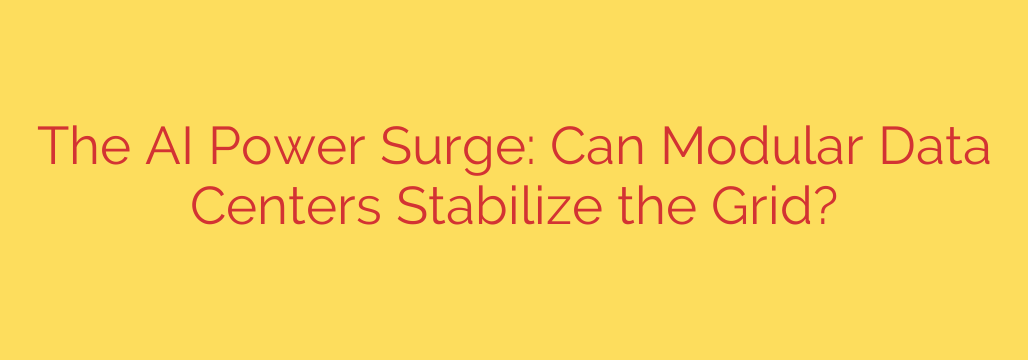
The rapid rise of Artificial Intelligence is fundamentally reshaping our world, but this incredible progress comes with a significant challenge: an unprecedented surge in energy demand. Powering the complex computations required by AI models consumes vast amounts of electricity, putting immense pressure on existing power grids. This escalating consumption raises serious concerns about grid stability and reliability, threatening to slow down innovation if not adequately addressed.
Traditional data centers, while essential, often require years to plan and build, making them slow to adapt to the accelerating pace of AI development and its associated power needs. Their reliance on centralized grid connections can exacerbate strain during peak demand.
Enter the concept of modular data centers (MDCs). These prefabricated, scalable units offer a potentially transformative solution. Unlike their traditional counterparts, MDCs can be designed, built, and deployed much faster, allowing infrastructure to keep pace with the dynamic growth of AI workloads. Their smaller footprint and flexibility enable deployment closer to where energy is generated or consumed, reducing transmission losses and easing pressure on long-haul lines.
Crucially, MDCs are well-suited to integrate distributed energy resources (DERs) such as rooftop solar, on-site wind turbines, and battery storage systems. By incorporating these sources directly, MDCs can operate with greater energy independence, reducing their reliance on the main grid. This not only enhances their own resilience but also contributes to overall grid stability by potentially acting as microgrids or providing ancillary services.
This shift towards modularity and integrated DERs offers a path to a more resilient and sustainable energy future for AI. While significant investment and careful planning are required, leveraging the adaptability of modular data centers could be key to powering the future of artificial intelligence without destabilizing our essential energy infrastructure. It’s a critical step in ensuring that the AI power surge becomes a force for innovation, not a source of grid instability.
Source: https://datacentrereview.com/2025/07/ai-vs-the-grid-can-modular-data-centres-keep-the-lights-on/








